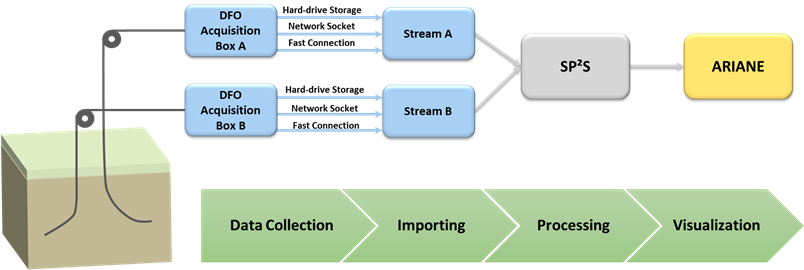DFO Monitoring
Know everything in real-time from anywhere
Distributed Fiber Optics (DFO) monitoring is intended to allow engineers and analysts to follow the whole life events of a well including hydraulic fracturing, production, well integrity and sand control. It can even extend insight towards formation with the diagnosis of natural fractures or cross-flow and pipeline integrity and security. However DFO monitoring generates thousands of TB of data which is currently slowing down the responsiveness of monitoring teams. To achieve true monitoring, ISP has designed and implemented a real-time solution.
With our DFO System composed of SP2S and ARIANE, it is now possible to take the most advantage of DFO data with real-time monitoring. Any member of the team can have a quick, global, precise and complete view of the well in real-time.

Real-time
SP2S connects to the DFO acquisition system on-site via a fast connection. SP2S processing speed can reach up to 1,280 MB/s which is 4 times faster than the average acquisition speed. ARIANE automatically imports the processed data over the network using an internal timer that goes down to the second. As a result, the analyst can visualize and interpret DFO data while it is being generated. True monitoring becomes possible.
No storage
SP2S extracts any relevant information out of the DFO signal while reducing the storage size by an 8,000 fold. As a result, it avoids the storage of hundreds of TB of data. The raw DFO can still be stored on hard-drives ; SP2S just makes the storage unnecessary. Along with storage, the shipping and sequential processing of the hard-drives including hard-drive manipulations and the associated risks of data loss become unnecessary.
Synchronization & integration
Whether it is at the source with SP2S being connected to several acquisition systems or in an office by using ARIANE, ISP’s DFO System can merge and synchronize all DFO data recorded on one well. All the monitoring data is indexed on the same timestamps and depth increments. At the same time, other monitoring measurements such as wellhead pressure can also be integrated to a monitoring project.







